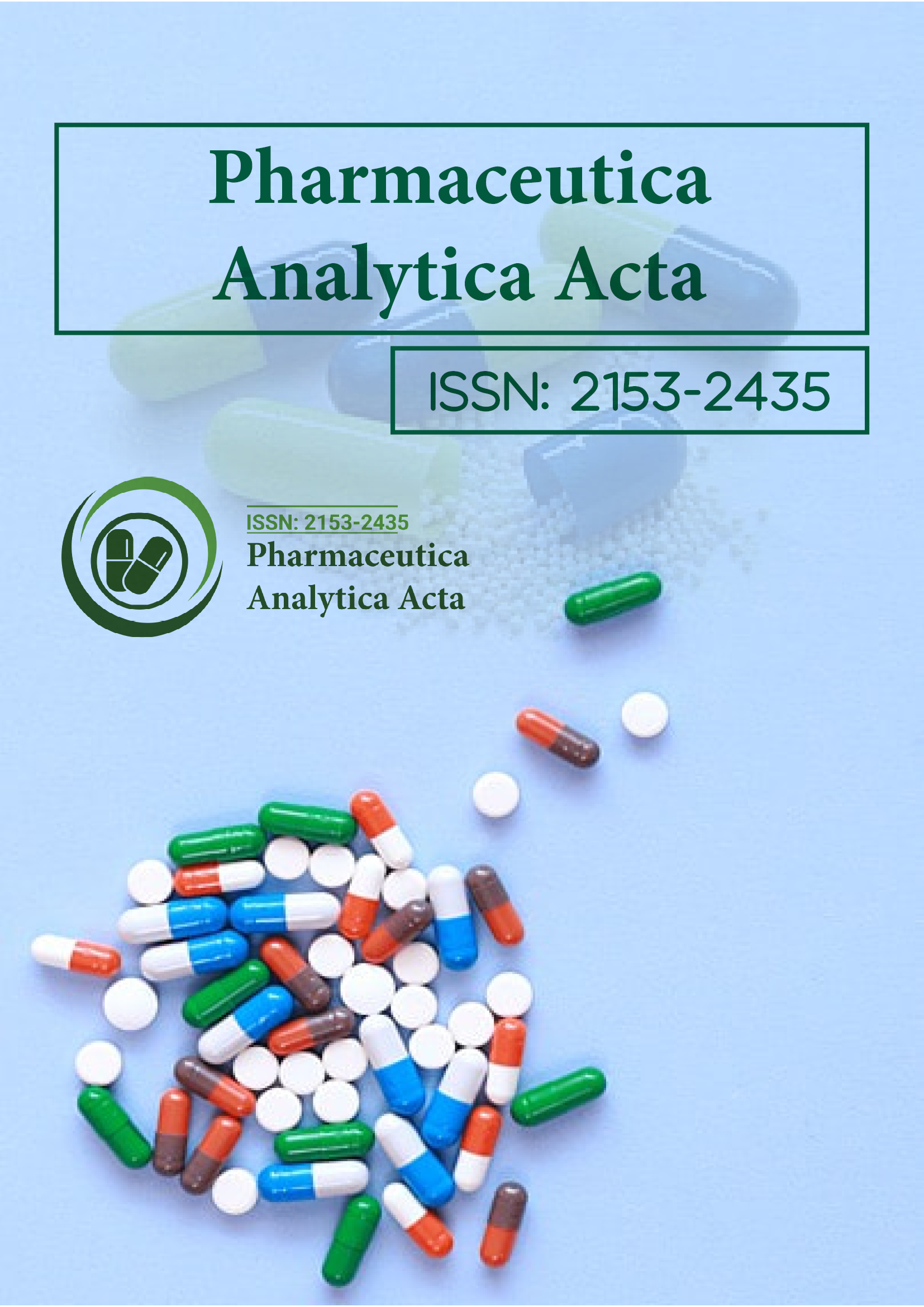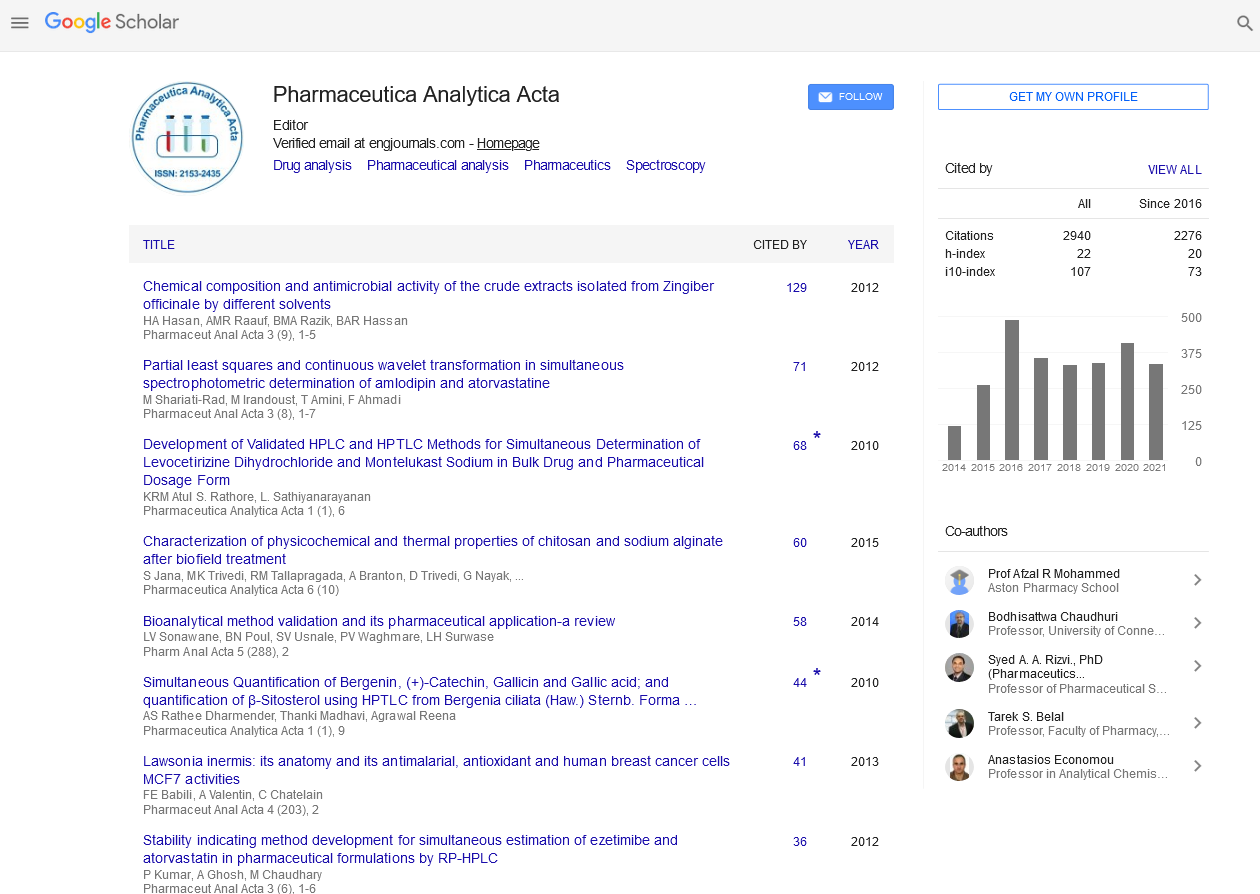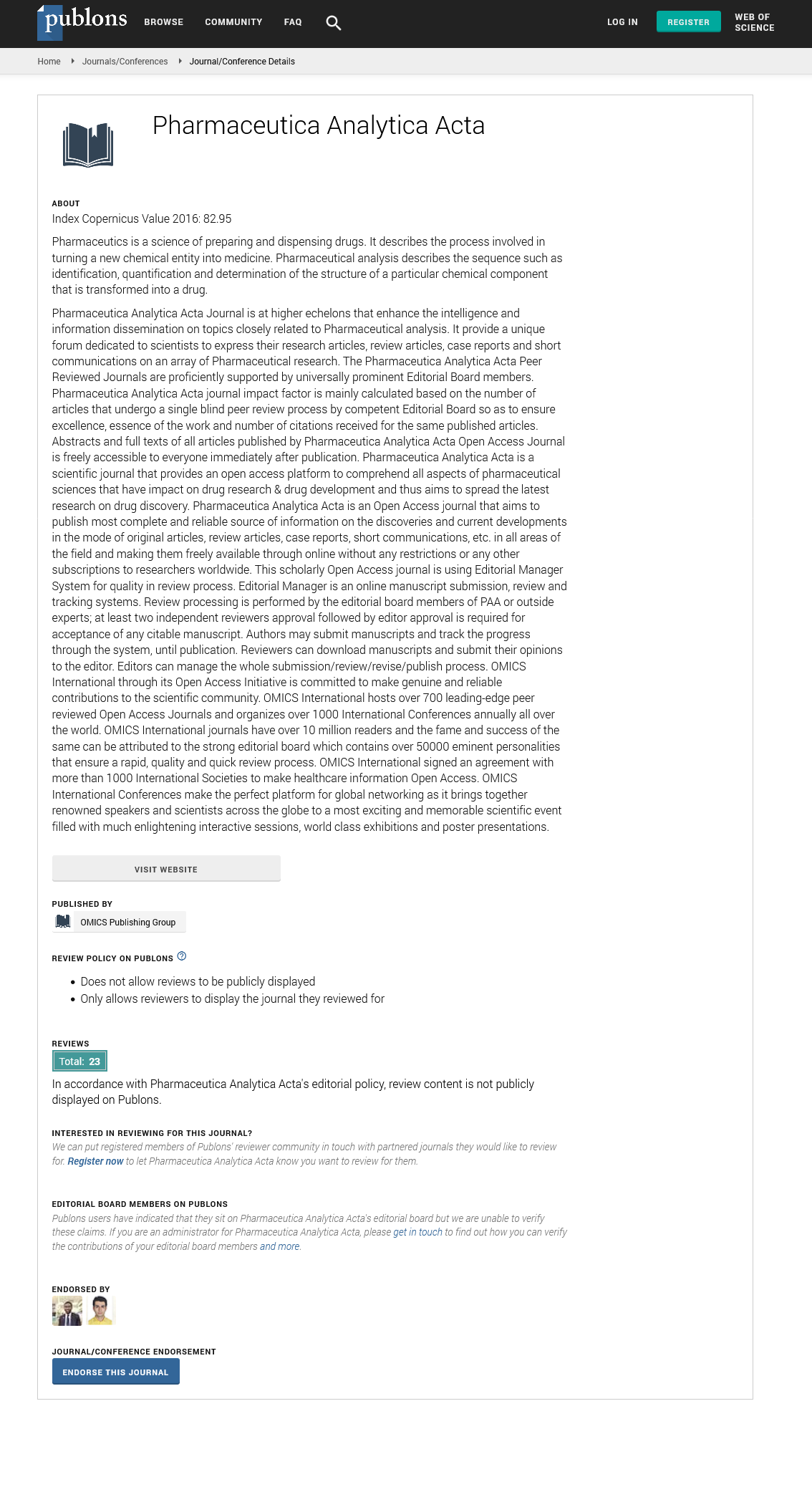Indexed In
- Open J Gate
- Genamics JournalSeek
- Academic Keys
- JournalTOCs
- The Global Impact Factor (GIF)
- China National Knowledge Infrastructure (CNKI)
- Ulrich's Periodicals Directory
- RefSeek
- Hamdard University
- EBSCO A-Z
- OCLC- WorldCat
- Publons
- Geneva Foundation for Medical Education and Research
- Euro Pub
- Google Scholar
Useful Links
Share This Page
Journal Flyer

Open Access Journals
- Agri and Aquaculture
- Biochemistry
- Bioinformatics & Systems Biology
- Business & Management
- Chemistry
- Clinical Sciences
- Engineering
- Food & Nutrition
- General Science
- Genetics & Molecular Biology
- Immunology & Microbiology
- Medical Sciences
- Neuroscience & Psychology
- Nursing & Health Care
- Pharmaceutical Sciences
Commentary - (2023) Volume 14, Issue 6
Investigating the Pharmacological Dynamics of Zingiberaceae-Endophyte Synergy
Tamam Elimat*Received: 13-Nov-2023, Manuscript No. PAA-23-24997; Editor assigned: 16-Nov-2023, Pre QC No. PAA-23-24997 (PQ); Reviewed: 30-Nov-2023, QC No. PAA-23-24997; Revised: 07-Dec-2023, Manuscript No. PAA-23-24997 (R); Published: 14-Dec-2023, DOI: 10.35248/2153-2435.23.14.765
Description
The Zingiberaceae family is renowned for its culinary and medicinal contributions. Microorganisms residing within the internal tissues of Zingiberaceae plants have been the subject of recent scientific inquiry, revealing a barrier to bioactive compounds with extreme pharmacological potential. This article seeks to explore the complex relationship between these endophytes and their host plants and clarifies the pharmacological activities that could redefine the landscape of natural medicine.
Beyond a mere coexistence, endophytes and Zingiberaceae plants engage in a symbiotic relationship. These microorganisms, predominantly fungi and bacteria, actively contribute to the host's well-being by synthesizing bioactive compounds that fortify the plant's defense mechanisms. Simultaneously, the plant provides a conducive environment for endophytic growth, establishing a mutually beneficial alliance that beyond conventional understandings of plant-microbe interactions.
The vast diversity within the Zingiberaceae family extends to the plethora of endophytes inhabiting different plant organs. From the rhizomes of ginger to the leaves of turmeric, each species within this botanical family hosts a diverse range of microorganisms, potentially housing distinct pharmacological attributes. Understanding this diversity becomes important as we resolve the pharmacological potentials embedded within the complex mosaic of Zingiberaceae-associated endophytes.
The pharmacological activities attributed to Zingiberaceae associated endophytes span a broad spectrum, surround antimicrobial, antioxidant, anti-inflammatory, and anticancer properties. These bioactive compounds hold tremendous potential for the development of novel pharmaceuticals and therapeutic interventions, challenging conventional paradigms in the field.
In a time characterised by raising antibiotic resistance, the antimicrobial properties of endophytes assumes heightened significance. Compounds derived from these microorganisms have exhibited inhibitory effects against a spectrum of pathogenic bacteria and fungi, presenting a potential method for the development of next-generation antimicrobial agents.
Oxidative stress underlies numerous chronic ailments, necessitating effective antioxidant interventions. Endophytederived compounds within the Zingiberaceae family showcase remarkable antioxidant properties, scavenging free radicals and mitigating cellular damage. These findings elevate the pharmacological profile of Zingiberaceae plants, adding an additional layer to their traditional medicinal significance.
Chronic inflammation lies at the core of various debilitating conditions, from arthritis to neurodegenerative disorders. Endophyte-derived compounds exhibit anti-inflammatory potential, modulating immune responses and attenuating inflammation. This method of research holds potential for the development of targeted therapies with enhanced efficacy and reduced side effects.
The fields of cancer therapeutics represents both a challenge and an opportunity in the region of endophyte research. While the cytotoxic effects demonstrated in preclinical studies are interesting, the translation into clinically viable cancer treatments necessitates rigorous research and meticulous clinical trials. The potential, however, remains transformative, offering a glimpse into a future where natural biodiversity contributes to the arsenal against one of humanity's most formidable adversaries.
The fields of endophyte research within the Zingiberaceae family extends to the region of cancer therapeutics. Compounds isolated from these microorganisms have demonstrated cytotoxic effects against various cancer cell lines in preclinical studies. While the translation of these findings into clinical applications presents challenges, the prospect of innovative cancer treatments rooted in natural biodiversity is both compelling and transformative.
The drive into the pharmacological area of Zingiberaceae associated endophytes is not without challenges. From the identification and isolation of bioactive compounds to the translation of preclinical findings into clinical applications, a lot of obstacles must be overcome. Additionally, ethical considerations regarding the conservation of plant biodiversity and the sustainable utilization of natural resources are imperative.
In conclusion, the exploration of endophytes associated with the Zingiberaceae family exhibit an attractive narrative of symbiotic relationships, biochemical complex, and pharmacological potentials. This botanical mosaic, the potential of innovative drug development, sustainable healthcare solutions, and transformative cancer therapeutics prepare for a future where the natural world becomes an invaluable source of inspiration for medical advancements.
Citation: Elimat T (2023) Investigating the Pharmacological Dynamics of Zingiberaceae-Endophyte Synergy. Pharm Anal Acta. 14:765.
Copyright: © 2023 Elimat T. This is an open-access article distributed under the terms of the Creative Commons Attribution License, which permits unrestricted use, distribution, and reproduction in any medium, provided the original author and source are credited.


